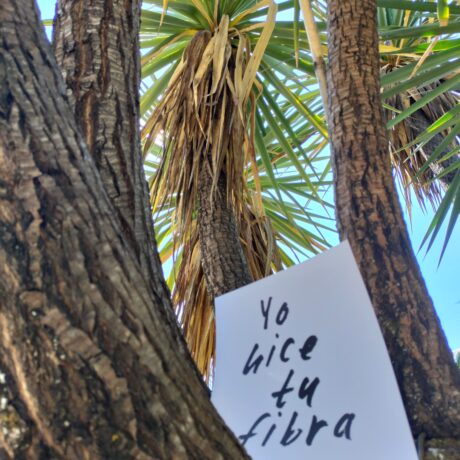How does greed drive exploitation and inequality in the fashion industry?
During the month of May, we’ve been exploring the topic of ‘Greed & Growth’ at Fashion Revolution. It’s an incredibly complicated and systemic issue, and when we zoom into more granular industry problems, they’re often rooted in these larger forces.
Looking into so many of the problems in the industry, like environmental degradation, low wages, gender inequality, lack of diversity or overconsumption, we can trace them back to greed.
By its definition, greed is the pursuit of excess. Be it money or material possession, greed is about taking more than is needed. From a historical perspective, it’s an incredibly human characteristic. There is no other species on Earth that will proactively take more than is needed. Sure, squirrels stockpile their nuts for the winter, but the biologically-motivated pursuit of food for survival is distinct from the wealth and status motivations that drive greed.
Morally, greed has been understood in a negative light. It casts itself within the 7 deadly sins of Christianity and the 3 poisons of Buddhism. In 1714, Bernard Mandeville challenged the notion that greed and other frowned upon behaviours should be bad for social progress. He wrote,
“T’ enjoy the World’s Conveniences,
Be fam’d in War, yet live in Ease,
Without great Vices, is a vain
Eutopia seated in the Brain.”
In simple terms, he was saying that in order to enjoy a life beyond the simplicity of obtaining food and shelter, people in society need to pursue greed, vanity, status, gluttony and other vices in order to drive the economy.
This thinking was closely followed by Adam Smith, often described as the father of modern economics, who expanded upon Mandeville’s thinking to suggest that these vices that drive self-interest shouldn’t be thought of in a negative light at all. Instead of greed, let’s call it being driven. Instead of vanity, let’s call it taking pride in one’s appearance.
Another of Smith’s lasting tenets was the vision of a world of dependence. One of my favourite examples of this idea, applied to our modern world, is a work called the Toaster Project. In a book synonymous to the design project, Thomas Thwaites narrates his journey around the United Kingdom to create his very own made-from-scratch toaster without the help of modern tools. Thwaites writes,
“It took nine months, involved travelling nineteen hundred miles to some of the remotest places in the United Kingdom, and cost me £1187.54… I really made it from the ground up; starting by digging up the raw materials and ending with an object that Argos sells for only £3.94.”
The purpose of his project was not simply to toast bread, but to demonstrate the preposterousness of a society where everyday activities (such as bread toasting) can’t be carried out in full by a single individual. Instead, our necessities have come to rely on a complex web of global and fragmented supply chains. We are dependent.
Dependant on what?
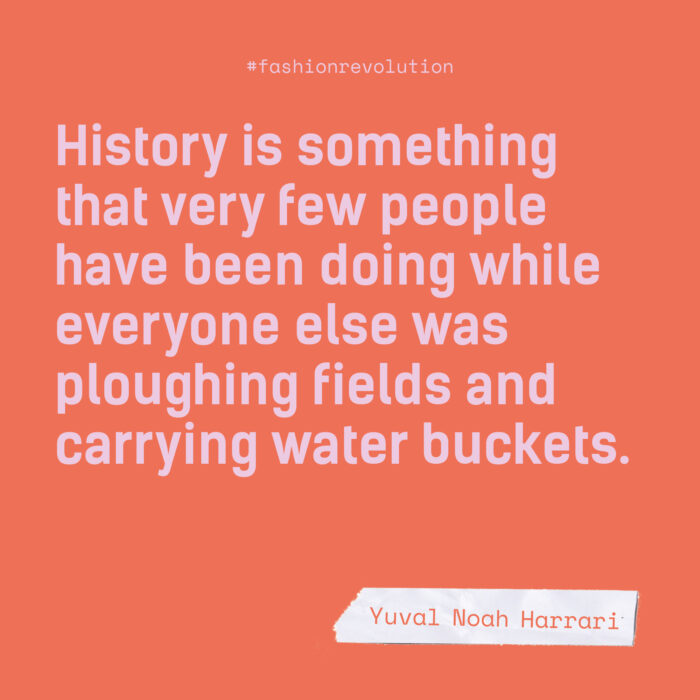 While greed may be intrinsically driven and subject of unending moral debate, it manifests itself in societies of inequality. So while the dialogue around the subject unfolded across centuries, societies, and theologies, in real life, for most of the people who have lived in modern times, greed has tangibly shaped our worlds.
While greed may be intrinsically driven and subject of unending moral debate, it manifests itself in societies of inequality. So while the dialogue around the subject unfolded across centuries, societies, and theologies, in real life, for most of the people who have lived in modern times, greed has tangibly shaped our worlds.
Yuval Noah Harrari writes in Sapiens, “History is something that very few people have been doing while everyone else was ploughing fields and carrying water buckets”. In that sense, it’s impossible to chart historical perception of greed without also portraying the rise of modern capitalism.
Capitalism is a system of profit-making. In the fashion industry, this might mean growing cotton, turning the crop into material, the material into a shirt, and selling the shirt for money. Profit, in most cases, is the input of natural resources and human labour to output cash or wealth.
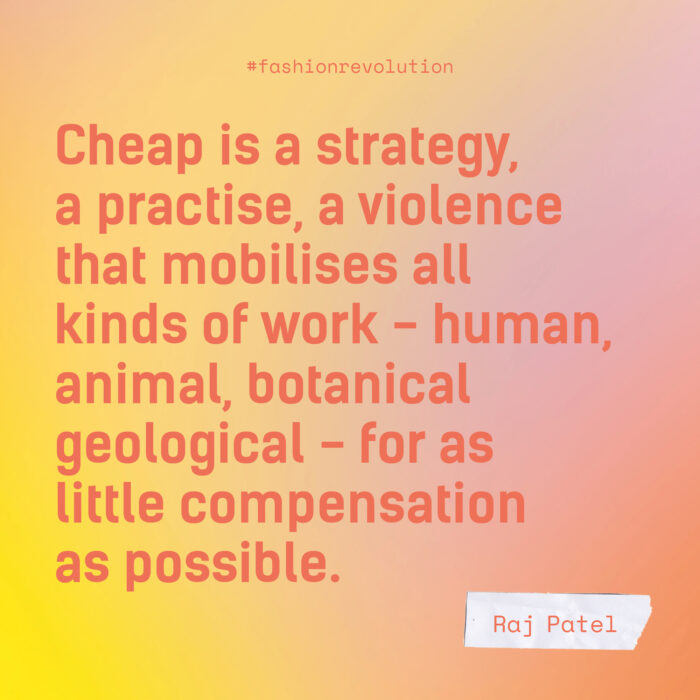 It sounds simple, because for most of us ideas of money, wealth and finance feel tangible. The problem is that these are really conceptual ideas we’ve come to simply recognise and acknowledge. Money is really just paper and coins, and wealth is really just a number in a spreadsheet. So the only way to turn cotton crops into a shirt and sell it for profit is to undervalue the nature and the labour that went into the shirt itself.
It sounds simple, because for most of us ideas of money, wealth and finance feel tangible. The problem is that these are really conceptual ideas we’ve come to simply recognise and acknowledge. Money is really just paper and coins, and wealth is really just a number in a spreadsheet. So the only way to turn cotton crops into a shirt and sell it for profit is to undervalue the nature and the labour that went into the shirt itself.
In the book ‘A History of the World in Seven Cheap Things’ by Raj Patel (who we profiled in our latest zine) and Jason W Moore, Cheapness is defined as “…a strategy, a practice, a violence that mobilises all kinds of work – human, animal, botanical and geological – for as little compensation as possible.”
Enter exploitation.
At Fashion Revolution, we know that the vast majority of people around the world who make our clothes are subject to exploitation and abuse. And it’s not as though the fashion industry is some niche case of injustice. Black (2013) estimates that some 25-60 million people are directly employed in the fashion industry, and the actual number is impossible to pinpoint. Modern slavery, child labour, poverty, gender discrimination and low pay are rife within the garment supply chain.
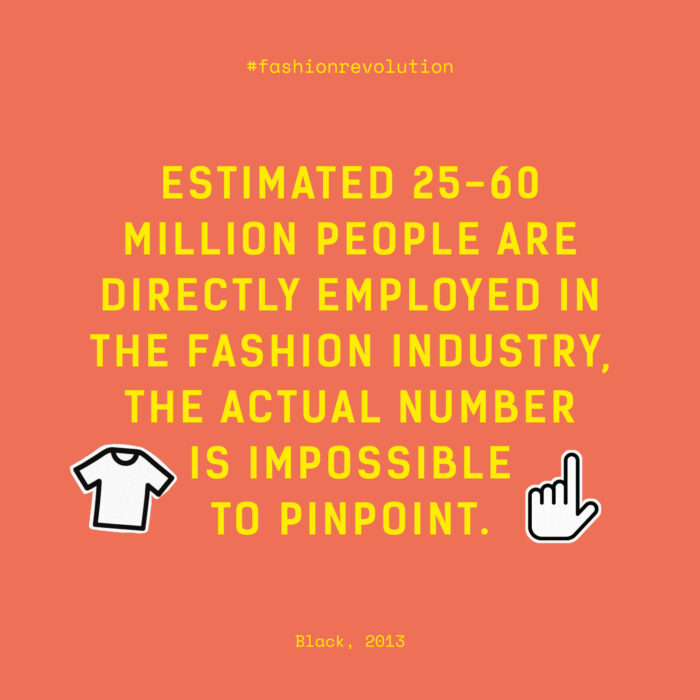
On the opposite end of the equation, fashion CEOs are a picture of extreme wealth. Estimates suggest that around just 26 billionaires own half of the world’s wealth. Glancing down the list, at least 9 of the 26 are tied to the fashion & beauty industries to some degree, and one is shortly on his way to transcending billionaire status.
Today’s industry is one of extreme inequality. Fast-fashion and the rise of cheap mass production have sold us the idea that fashion is democratic, that anyone’s budget can afford them the latest styles and seasonal wardrobe updates. Yet the reality isn’t democracy, it’s globalised and systemic exploitation. It undervalues natural resources (like the Amazon Rainforest, which is being cut down in part to feed the leather industry) and human labour (17% of workers in an IGC study reported having to cut down their meals during the last week before pay day).
Greed isn’t just fed by nature and labour, it needs one other ingredient to turn the sale of 10 t-shirts into the sale of 10,000 t-shirts. It needs consumer desire, beyond rational need. If you’re a company that’s achieved enough success to confidently say you’ve saturated the market, one would think that you could sit back and be content with your sales numbers and profit. But greed gets in the way of such a rational approach to business. So it uses advertisements, product placements, Instagram influencers and affiliated links to drive more profit and more growth. In that sense, greed makes us all greedy. While the 26 billionaires widening the wealth gap are far more problematic than someone lusting after shiny new clothes, greed sets the bar by which we measure happiness, success and wellbeing through material objects, financial gains and gross productivity.
Greed in a pandemic?
The COVID-19 crisis has worsened already unequal circumstances for workers around the world. In a greed-driven system, tragedy and crisis hits the most vulnerable populations the worst, and this could not be truer in our current pandemic.
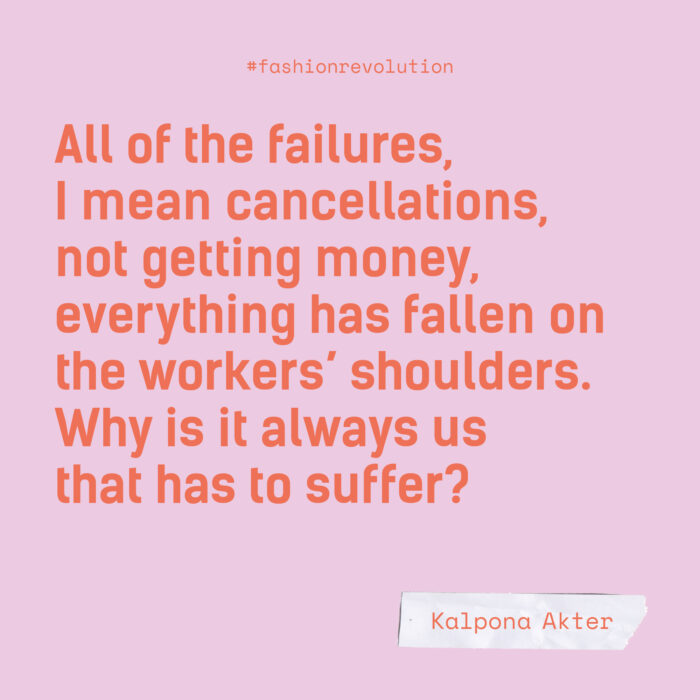 As retailers cancelled orders from factories around the globe (orders which were already in production, or in some cases due to be shipped to brands), it is the workers who will suffer the financial consequences. Even brands owned by some of the world’s wealthiest individuals have dropped the burden of the pandemic on the supply chain workers at the very bottom of the value chain.
As retailers cancelled orders from factories around the globe (orders which were already in production, or in some cases due to be shipped to brands), it is the workers who will suffer the financial consequences. Even brands owned by some of the world’s wealthiest individuals have dropped the burden of the pandemic on the supply chain workers at the very bottom of the value chain.
In a recent interview on the Business of Fashion podcast, Kalpona Akter of the Bangladesh Centre for Worker Solidarity reminds us, “All of the failures, I mean cancellations, not getting money, everything has fallen on the workers’ shoulders. Why is it always us? Why is it always us that has to suffer?”
What can we do?
Greed is systemic. It’s fed to us in small doses through marketing campaigns and email newsletters that tell us to ‘go on, treat yourself’. It’s used as a metric for success on LinkedIn posts that say things like, “How I became a millionaire from my parents’ basement”. And it shapes the lives of the Global South when brands with uninhibited power exploit people and nature to turn a profit. But now, in crisis, we hope that we can come together in collective action and share a vision for a world that is run on equality instead of greed. We need to remember that small actions, taken together can have an exponential positive outcome. A year before the pandemic began, Greta Thunberg told the world, “We cannot solve a crisis without treating it as a crisis… if solutions within the system are so impossible to find, then we should change the system itself.”
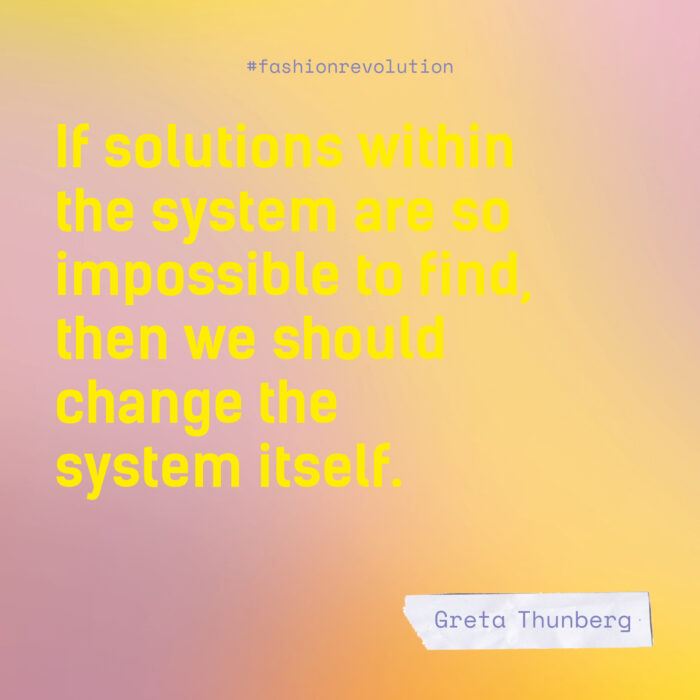
You can begin by challenging the badly behaving brands throughout the Coronavirus pandemic. Send our email template to the big brands, asking them to #payup and take responsibility for the people in their supply chain. Ask brands #WhoMadeMyClothes? and keep following up with questions to drive real, meaningful change. If you want to learn more about our Fashion Revolution vision for changing the fashion system, check out our 2020 white paper and join us in calling for a fashion industry that measures success not by exponential growth or profit margins, but by human wellbeing, environmental stewardship and equality.






